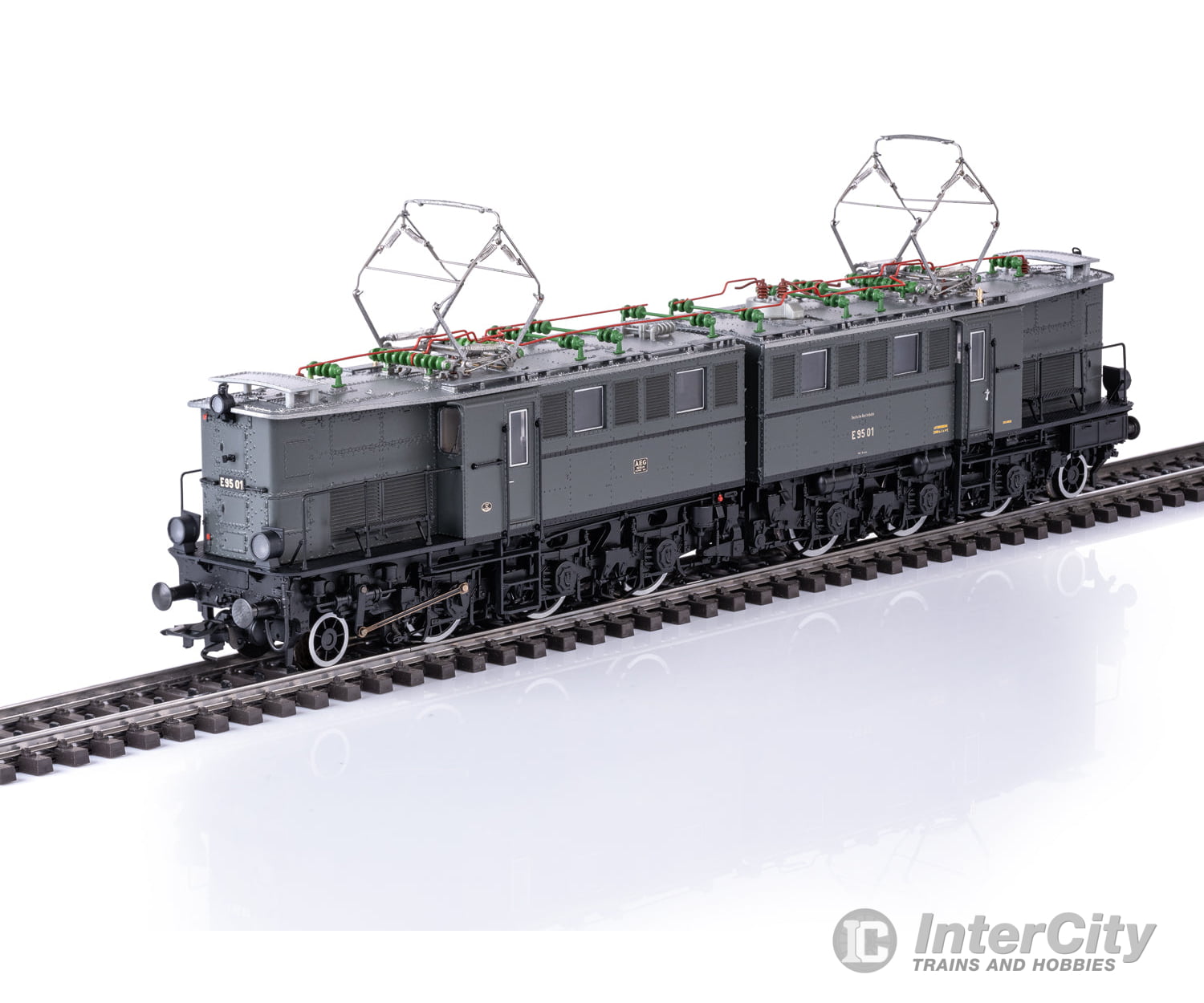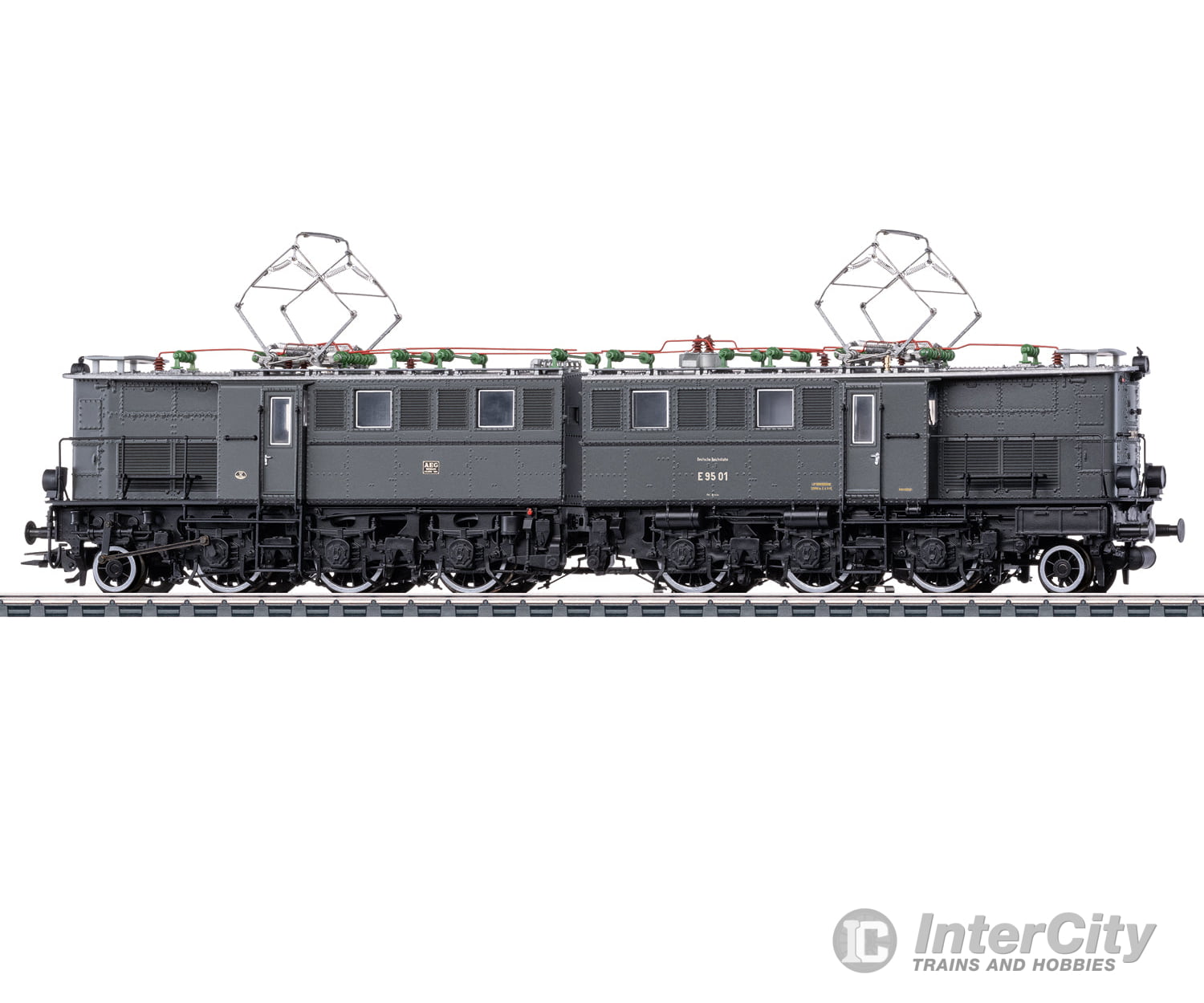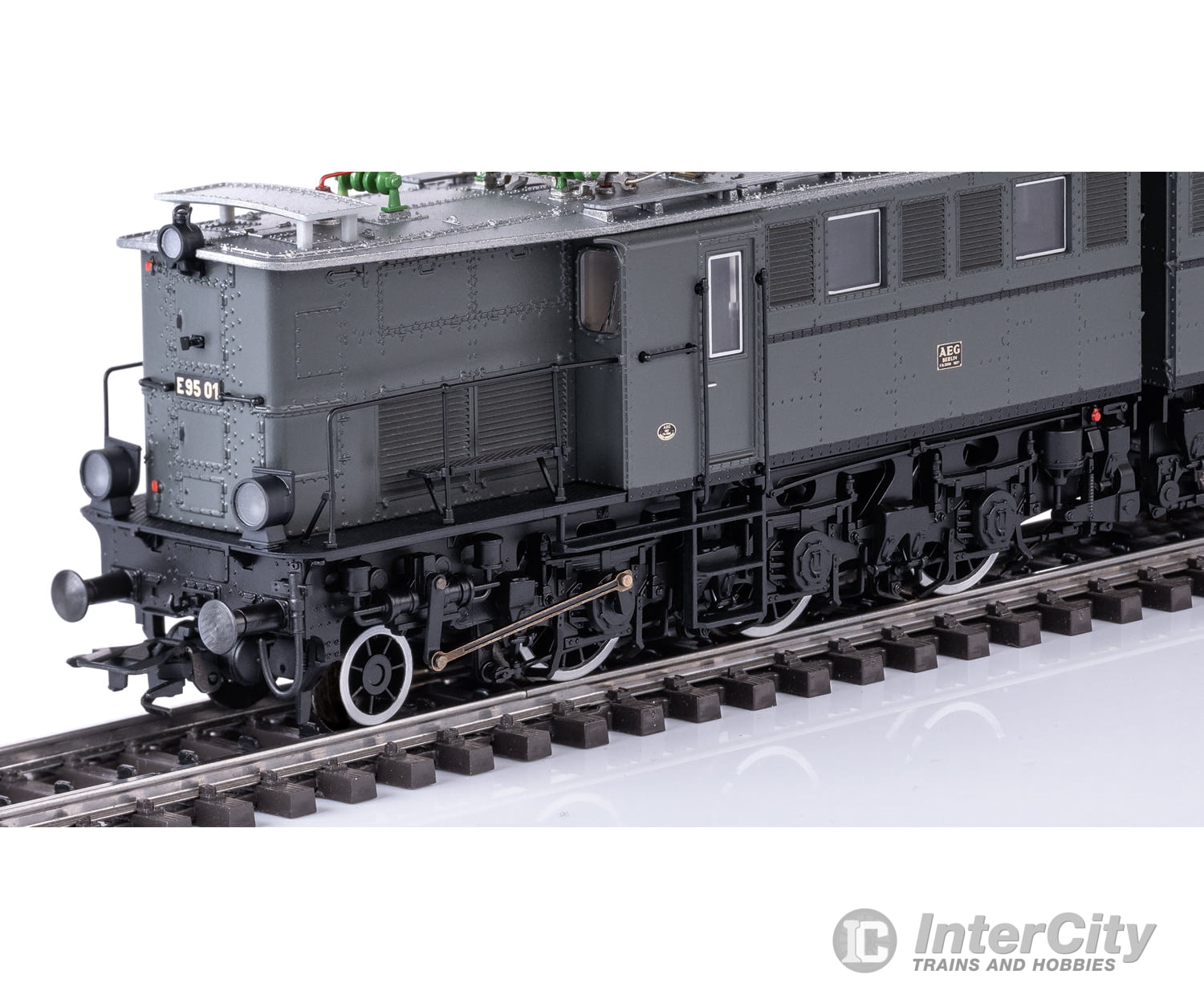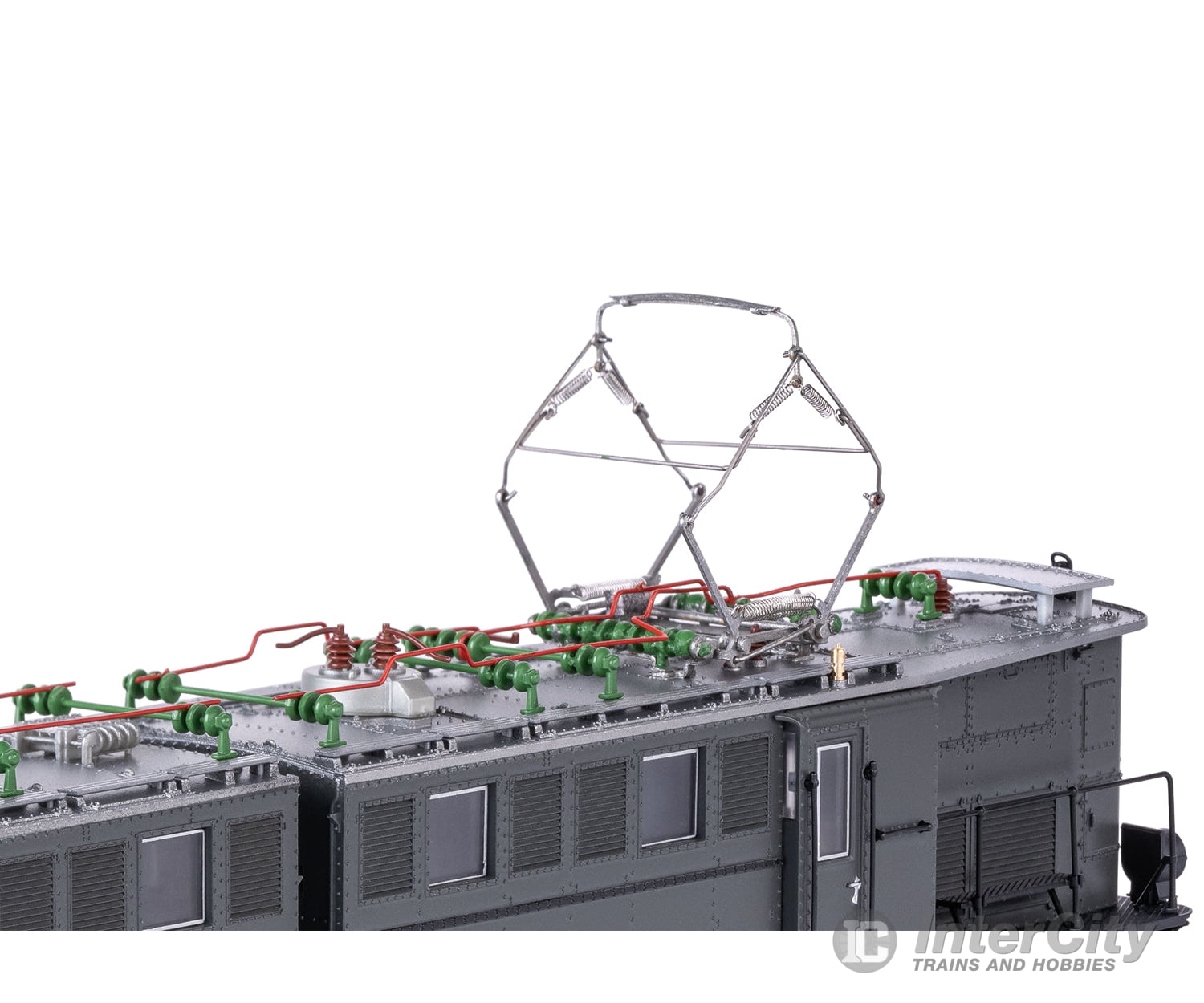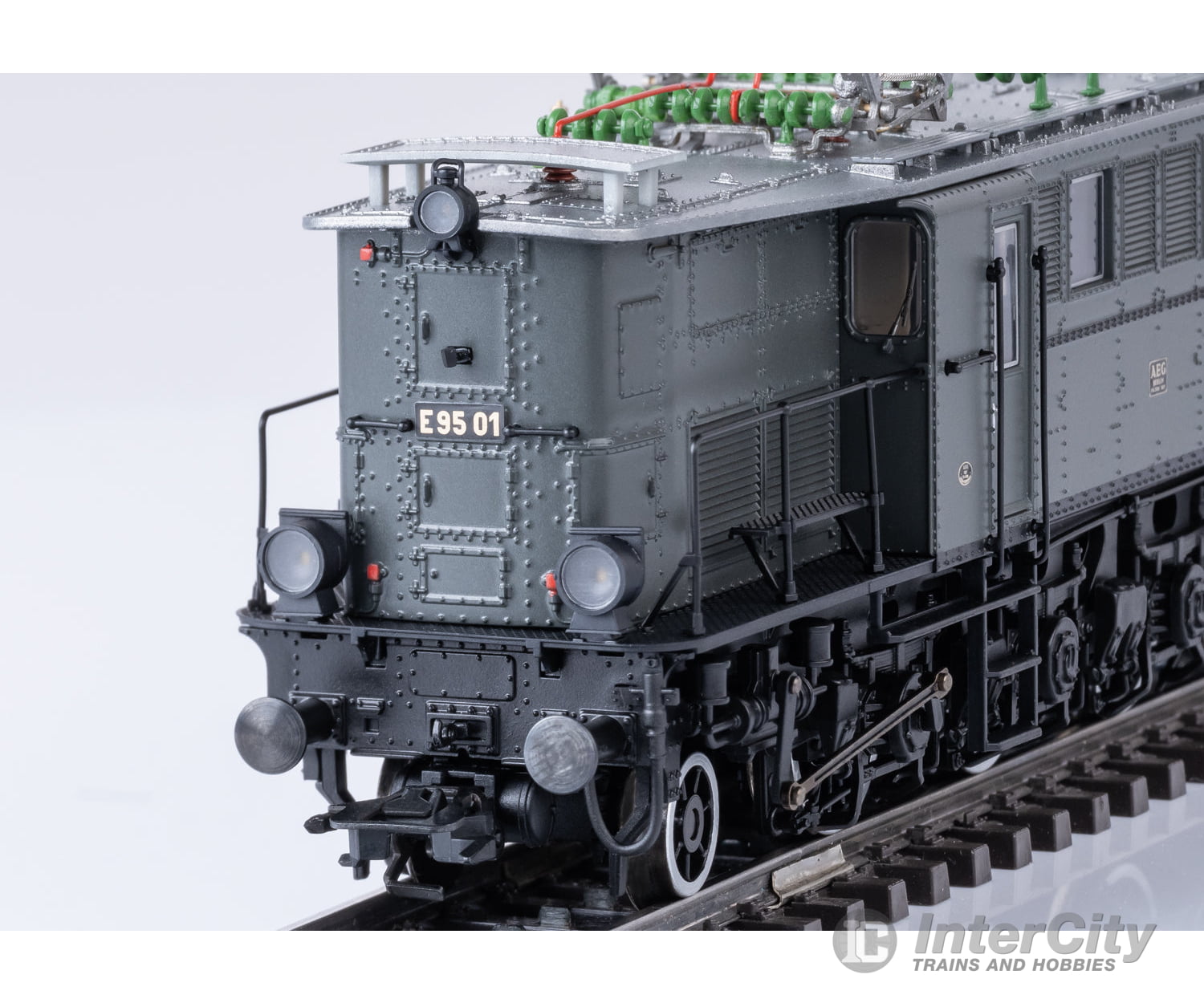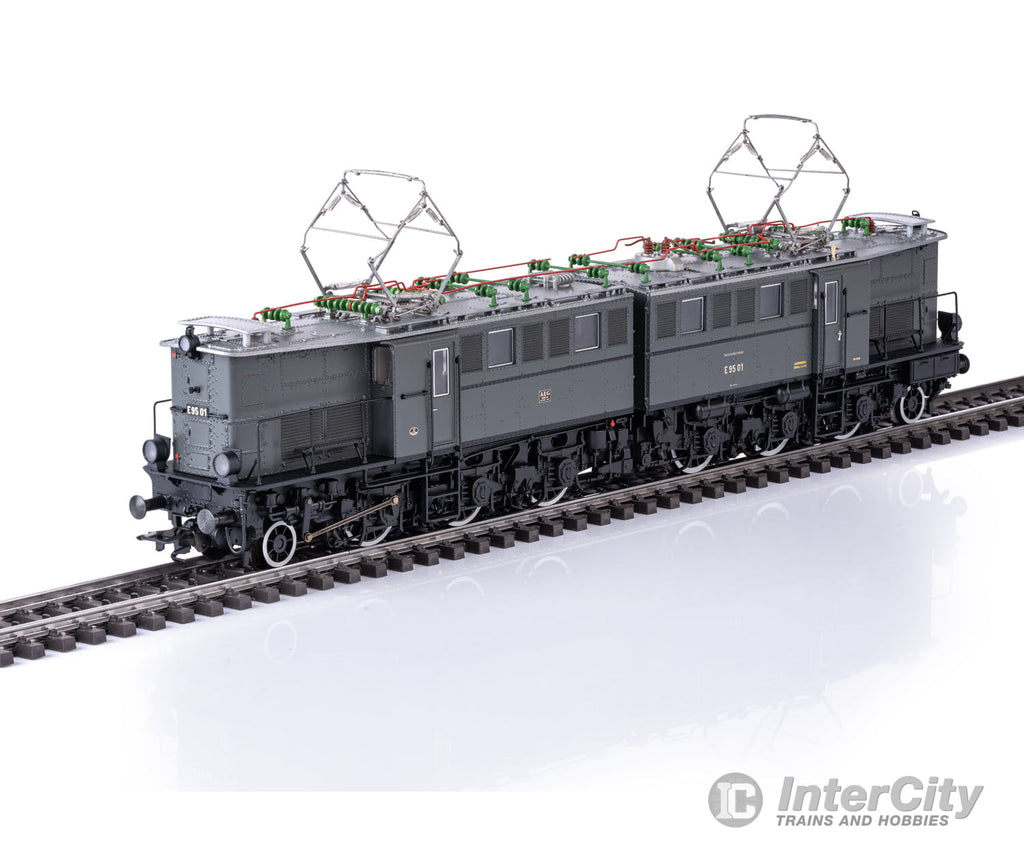Description
Marklin Insider Club Model! You must be a member of the Marklin Insider Club to order this model. Please order online and then send us a scan/image of the completed order form included with a recent club mailing.
The E 95 - a Milestone in German Locomotive Building
Larger, more powerful, more expensive: This is how the class E 95 electric locomotive can be described which was placed into service in 1927 as six units by the German State Railroad. With a continuous rating of over 3,200 horsepower, a length of over 20 meters / 65 feet, a weight of 138.5 metric tons, and a price of 543,000 Reich Marks, these characteristic units were at that time the most powerful and most expensive German electric locomotives. They were designed for the many heavy coal trains, up to 2,200 metric tons, which rolled every day from the Silesian mountain area in the direction of Dresden and Berlin. Their quaint, almost terrifying appearance was based among other things on the two high hoods that contained the oil-cooled main transformer and the contactor control circuits. Moreover, the class E 95 units were actually double locomotives to allow installation of the necessary six driving axles. In operation these power houses turned in marvelous performance. At that time, they reached the highest running performance of all Silesian freight locomotives. When demand for coal went down in the course of the global economic crisis, these 70 km/h / 44 mph locomotives were also used to pull passenger trains. Road number E 95 02 has been preserved in the maintenance facility. Perhaps in the not too distant future you can even experience this one-time technical masterful achievement live. It will certainly not be pulling coal trains. That is reserved - in the small scale - for the new, excellent Märklin model.
Prototype: German State Railroad Company (DRG) class E 95 heavy freight electric locomotive. Used to pull heavy unit coal trains in the Silesian network. Bluish gray basic paint scheme. The electric locomotive was the largest electric locomotive in Germany for a long time. Locomotive road number E 95 01. The locomotive looks as it did around 1928.
Highlights
- Completely new tooling.
- Highly detailed metal construction.
- A variety of separately applied details.
- A high-efficiency propulsion in each locomotive half along with a flywheel and 2 driving wheelsets powered in each locomotive half.
- Pantographs that can be raised and lowered digitally.
- Cab and engine room lighting that can be controlled digitally.
- Running air pump on the second half of the locomotive.
- World of Operation mfx+ digital decoder and extensive light and sound functions included.
- Ideal locomotive for unit coal trains with the type OOt Oldenburg high-capacity dump car as new tooling.
- Buffer height conforms to the NEM.
Model: The locomotive has an mfx+ digital decoder and extensive light and sound functions. 2 controlled, high-efficiency propulsion units, each with a flywheel, 1 motor in each locomotive half. Both outer drive wheel sets powered in each group of drive wheels. 2 Traction tires. Both locomotive halves are permanently coupled together using couplings with guide mechanisms. Dual headlights change over with the direction of travel, will work in conventional operation, and can be controlled digitally. There is also a third headlight mounted above as an oncoming train light and it can be controlled separately at the front in the direction of travel. There is cab lighting and engine room lighting in each locomotive that can be controlled separately in digital operation. Maintenance-free LEDs are used for the lighting. The pantograph on each locomotive half can be raised and lowered separately in digital operation. The highly detailed construction is constructed mostly of metal and includes many separately applied individual parts. There are close couplers with close coupler mechanisms and NEM pockets at both ends of the locomotive. The buffer height adheres to the NEM. The minimum radius for operation is 360 mm / 14-3/16". Brake hoses and prototype coupler imitations are included for mounting on the locomotive. Length over the buffers 24.1 cm / 9-1/2".
| ControlUnit | MobileStation | MobileStation 2 | CentralStation 1/2 | CentralStation 3/2* Mobile Station 2** |
|
|---|---|---|---|---|---|
| Headlight(s) | * | * | * | * | * |
| Light(s) for Oncoming Train | * | * | * | * | * |
| Electric locomotive op. sounds | * | * | * | * | * |
| Locomotive whistle | * | * | * | * | * |
| Direct control | * | * | * | * | * |
| Pantograph 1 | * | * | * | * | |
| Engineer's cab lighting | * | * | * | * | |
| Pantograph 2 | * | * | * | * | |
| Engineer's cab lighting | * | * | * | * | |
| Sound of squealing brakes off | * | * | * | ||
| Main Relay | * | * | * | ||
| Whistle for switching maneuver | * | * | * | ||
| Engine room lighting | * | * | * | ||
| Engine room lighting | * | * | * | ||
| Rail Joints | * | * | * | ||
| Front Headlights off | * | * | * | ||
| Rear Headlights off | * | ||||
| Switching range + switching light | * | ||||
| Blower motors | * | ||||
| Blower motors | * | ||||
| Brake Compressor | * | ||||
| Letting off Air | * | ||||
| Sanding | * | ||||
| Replenishing sand | * | ||||
| Buffer to buffer | * | ||||
| Sound of Couplers Engaging | * |
